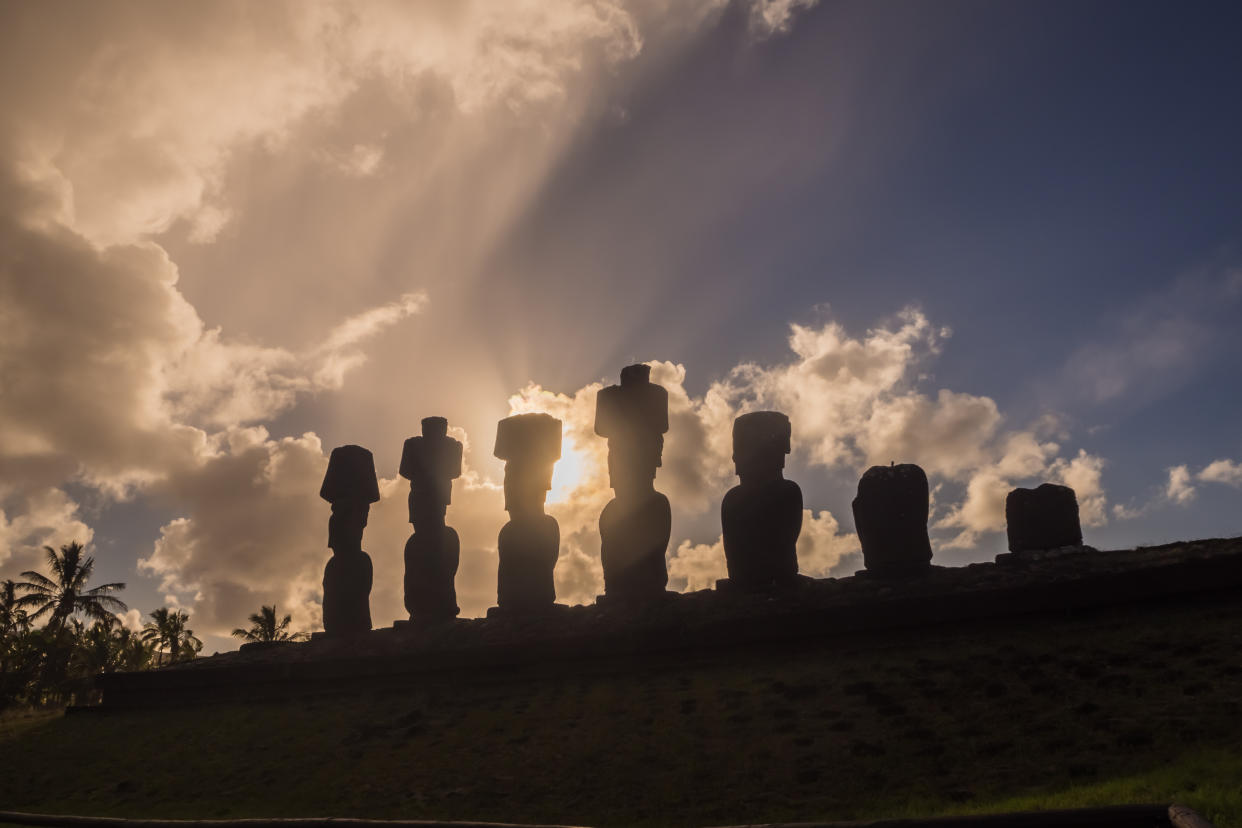Researchers work out what Easter Island statues were actually for

They’re one of the most recognisable ancient relics on our planet – but scientists might have worked out what the huge ‘moai’ statues of Easter Island were actually for.
The ancient Easter Island people carved and transported the island’s 900 large statues on the island by hand – but their purpose has been a mystery until now.
Researchers suggest that the locations of the statues may have shown inhabitants where there was drinkable water, according to Carl Lipo of Binghampton University.
As there are few rivers and streams on Easter Island, the inhabitants collected coastal groundwater, Lipo believes – and the statues are clustered in areas where the salt level made it safe to drink.
READ MORE FROM YAHOO NEWS UK:
The worst British railway stations for delays have been revealed
Suspected drug-driver arrested after his car was stopped on motorway with only three tyres
Theresa May says EU demanding ‘backstop to the backstop’ to resolve Brexit talks
Jurors shown image of ’fanatical neo-Nazi terrorist posing in KKK robes with his newborn baby’
British restaurant owner ‘shot dead by hunters’ while biking in the French Alps
Lipo says, ‘The porous volcanic soils quickly absorb rain, resulting in a lack of streams and rivers.
‘Fortunately, water beneath the ground flows downhill and ultimately exits the ground directly at the point at which the porous subterranean rock meets the ocean. When tides are low, this results in the flow of freshwater directly into the sea.
Researchers have often wondered why the island’s famous statues are only located in certain places around the island, with a high concentration of them near the coasts.
Lipo said, ‘Now that we know more about the location of freshwater, however, the location of these monuments and other features makes tremendous sense: they are positioned where freshwater is immediately available.’
He adds that that ‘cisterns’ found on the island couldn’t have supplied the large population with water – meaning they relied on groundwater.
‘This information ultimately sheds light on the conditions that drove and enabled these communities to work together to achieve their feats of engineering,’ he said.


